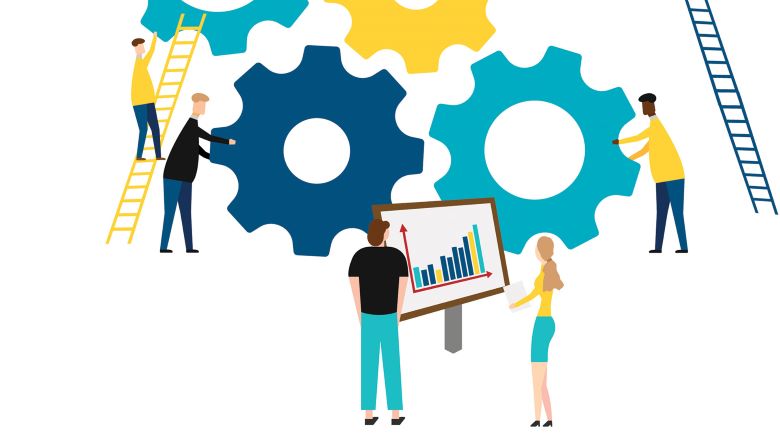
Change and uncertainty are constants in the business world, propelled by technological advancements, economic shifts, and unforeseen global events. To thrive amidst these challenges, building a resilient workforce is essential. This article will outline strategies to foster employee resilience, helping businesses navigate through turbulent times. Additionally, it will discuss the role of a professional employer organization in offering support and resources during these periods of change and uncertainty.
Understanding Resilience
The ability to overcome obstacles, adjust to change, and recover from setbacks is resilience. It’s not about avoiding challenges altogether but rather about developing the skills to overcome them. Resilient folks are better equipped to handle stress, remain productive in uncertain situations, and maintain a positive outlook despite setbacks.
Resilience encompasses various aspects of psychological, emotional, and cognitive well-being. It involves the ability to withstand pressure and adversity and grow and flourish in the process. Resilient people are more likely to view setbacks as temporary and solvable rather than insurmountable obstacles.
Moreover, resilience is a dynamic process that can be cultivated and strengthened over time. It involves building coping mechanisms, fostering social support networks, and developing adaptive strategies for dealing with challenges. Resilient individuals often exhibit traits such as perseverance, optimism, and emotional intelligence, which enable them to navigate difficult situations more effectively.
Strategies for Building Resilience
- Promote a Growth Mindset: Encouraging employees to view challenges as opportunities for growth instills a resilient mindset. Emphasizing the value of continuous learning and giving opportunities for professional development helps cultivate a workplace culture that thrives on adaptability and innovation. This strategy involves setting goals that stretch abilities while offering the necessary support and resources to achieve them, reinforcing the idea that effort and persistence lead to improvement and success.
- Foster Open Communication: Establishing a culture where transparency and open dialogue are the norms enhances trust and team cohesion, which is vital for steering through uncertain times. Encourage employees to share their thoughts, concerns, and ideas freely. This practice not only aids in identifying and addressing issues early but also fosters a sense of belonging and collective ownership over solutions, driving innovation and problem-solving across the organization.
- Provide Resources for Coping: Access to mental health support, stress management training, and comprehensive wellness programs are essential for maintaining employee well-being. Organizations can build a more resilient workforce to stress and adversity by actively supporting employees’ physical and emotional health. Initiatives could include mindfulness sessions, workshops on resilience, and policies that support mental health days, all aimed at equipping employees with coping mechanisms for a balanced and healthy work-life.
- Encourage Flexibility: Embracing flexibility in work arrangements and practices enables employees to better manage their personal and professional responsibilities, adapt quickly to changes, and reduce stress. Whether through remote work options, flexible scheduling, or autonomy in project management, flexibility contributes to a more engaged, satisfied, and resilient workforce.
- Lead by Example: Leadership’s role in modeling resilience cannot be overstated. When leaders openly discuss their challenges, share strategies for overcoming them, and demonstrate perseverance, they inspire their teams to adopt a similar approach. This leadership style fosters a culture where resilience is recognized as a valuable asset, encouraging employees to face difficulties with optimism and determination. Leaders should strive to show vulnerability where appropriate, sharing lessons learned from failures and highlighting how they are stepping stones to success.
- Celebrate Small Wins: Regularly acknowledging and celebrating small achievements and milestones can significantly boost team morale and individual motivation. This practice reinforces the value of each team member’s contributions, instilling a sense of accomplishment and encouraging continued effort and resilience in the face of obstacles. Creating moments to celebrate these wins through team meetings, internal newsletters, or casual acknowledgments helps maintain a positive atmosphere and keeps the team focused on progress.
- Promote a Culture of Collaboration and Support: Fostering an environment that values teamwork and mutual support enhances the organization’s collective resilience. Motivating employees to work together, share knowledge, and support one another during challenges leverages diverse strengths and perspectives, resulting in more innovative and effective solutions. Establishing cross-functional teams, mentorship programs, and collaborative platforms can facilitate this culture of cooperation and support, enabling the organization to navigate adversity more successfully as a united front.
The Role of Professional Employer Organizations (PEOs)
During times of change and uncertainty, companies may benefit from the support and resources offered by a Professional Employer Organization (PEO). PEOs provide comprehensive HR solutions, including payroll, benefits administration, compliance assistance, and risk management services.
PEOs can help businesses navigate transition periods by offering expert guidance on HR policies and practices. This ensures compliance with regulations. Additionally, PEOs can offer support in areas like employee development and training, performance management, and workforce planning, all essential for building organizational resilience.
By partnering with a PEO, companies can access the expertise and resources needed to weather the storms of change more effectively. PEOs act as strategic allies, enabling businesses to focus on their core operations while outsourcing HR tasks and accessing specialized support when needed.
Conclusion
Building a resilient workforce is essential for thriving in today’s dynamic business environment. By promoting a growth mindset, fostering open communication, providing resources for coping, encouraging flexibility, leading by example, and celebrating small wins, organizations can empower their employees to adapt to change and uncertainty with confidence.
Additionally, partnering with a PEO can offer valuable support and resources to help companies navigate transition periods more effectively. By investing in resilience-building strategies and leveraging external support when needed, businesses can position themselves for long-term success in an ever-changing world.






